Questions -
EXPERTSMINDS.COM ACCEPTS INSTANT AND SHORT DEADLINES ORDER FOR CYCLIC REDUNDANCY CHECK ASSIGNMENT - ORDER TODAY FOR EXCELLENCE!
Q1. Convert the binary data "011010" into analog waveforms using following modulation techniques.
Given I/P

a. Two level Amplitude Shift Keying
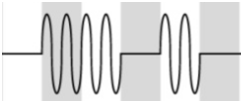
b. Two level Frequency Shift Keying

c. Two level Phase Shift Keying
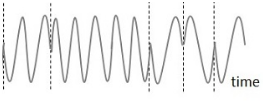
d. Differential Phase shift keying

e. Four level Amplitude Shift Keying
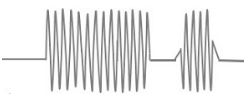
f. Four level Phase Shift Keying
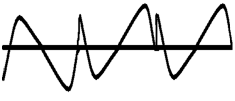
g. Eight level Amplitude Shift Keying

NEVER LOSE YOUR CHANCE TO EXCEL IN CYCLIC REDUNDANCY CHECK ASSIGNMENT - HIRE BEST QUALITY TUTOR FOR ASSIGNMENT HELP!
Q2. With fc = 500 kHz, fd = 25 kHz, and M = 16 (L = 4 bits), compute the frequency assignments for each of the sixteen possible 4-bit data combinations.

|
Given
|
Frequency in KHz
|
pattern
|
|
fc = 500 kHz
|
F1= 125
|
0000
|
|
2fd = 50 kHz
|
F2= 175
|
0001
|
|
F3= 225
|
0010
|
|
F4= 275
|
0011
|
|
F5= 325
|
0100
|
|
F6= 375
|
0101
|
|
F7= 425
|
0110
|
|
F8 = 475
|
0111
|
|
F9 = 525
|
1000
|
|
F10= 575
|
1001
|
|
F11= 625
|
1010
|
|
F12= 675
|
1011
|
|
F13= 725
|
1100
|
|
F14= 775
|
1101
|
|
F15= 825
|
1110
|
Q3. Draw the approximate Analog Modulation and Frequency Modulation waveforms in complete steps for the signal.
For FM, we can write, Output equation as
s(t) = Ac cos(2πfct + βsin(2πfmt))
Where, fc = carrier frequency,
Ac = amplitude of carrier
fm = input sine wave frequency
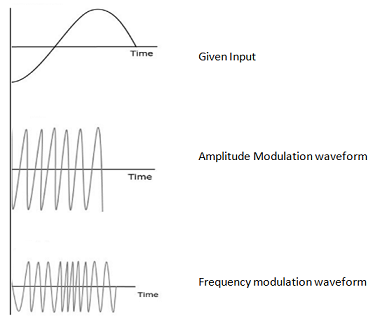
For AM, we can write
c(t) = A sin(2πfct). [fc = carrier frequency, A = amplitude]
m(t) = M cos(2πfmt + φ = Am cos(2πfmt + φ) [fm = input sine wave frequency]
Output equation is
y(t) = A sin(2πfct) + ½Am[sin(2π[fc +fm]t + φ) + sin (2π[fc - fm]t - φ)].
ORDER NEW CYCLIC REDUNDANCY CHECK ASSIGNMENT & GET 100% ORIGINAL SOLUTION AND QUALITY WRITTEN CONTENTS IN WELL FORMATS AND PROPER REFERENCING.
Q4. Draw the 16 QAM Constellation Diagram having two different amplitude levels and eight different phase levels.
16 QAM Constellation Diagram having two different amplitude levels and eight different phase levels can be shown as follows
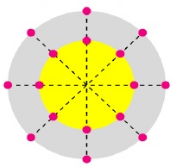
Q5. Explain and draw the Error Detection Process for Cyclic Redundancy Check (CRC).
Let, k = block of bits
And n = bit sequence
The output will be (k+n) bits.
If the input pattern is 10 bits and required pattern is 6 bits then FCSR should be 5 bits.
Error Detection Process for Cyclic Redundancy Check (CRC) is the process of finding error in a signal at the receiver end. If any transmitter can generates n number of bit sequence for predetermined k block of bits, this frame is known as frame check sequence (FCK).
At the receiver end this will be divided by same number and if there is no remainder, then it can be awarded as no error.
GET GUARANTEED SATISFACTION OR MONEY BACK UNDER CYCLIC REDUNDANCY CHECK ASSIGNMENT HELP SERVICES OF EXPERTSMINDS.COM - ORDER TODAY NEW COPY OF THIS ASSIGNMENT!
Q6. Compute the frame check sequence for the following information: Message = 10111100, Pattern = 11011.
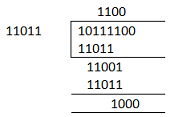
Code-word sent = 10110100
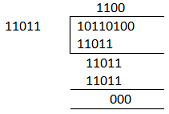
Q7. Compute the transmitted signal using Direct Sequence Spread Spectrum for the following information: Input: 1011, Locally Generated PN bit stream: 101011011010, T = 3Tc.
Input = 1011 [X(t) = +1-1+1+1]
Bit pattern = 101011011010
Generated pattern = +1-1+1-1+1+1-1+1+1-1+1-1
Transmitted signal = 101011010000
Q8. What is the difference between Infrastructure and ad hoc modes in WLAN? Draw their relative diagrams as well.
Difference between Infrastructure and ad hoc modes in WLAN:
Infrastructure modes in WLAN composed of one or more access points whereas ad hoc modes in WLAN composed of only stations.
Infrastructure modes in WLAN used to communicate between stations whereas in other case it is done directly.
DO WANT TO HIRE TUTOR FOR ORIGINAL CYCLIC REDUNDANCY CHECK ASSIGNMENT SOLUTION? AVAIL QUALITY CYCLIC REDUNDANCY CHECK ASSIGNMENT WRITING SERVICE AT BEST RATES!
Q9. Compare the differences of TCP and OSI protocols for wired and wireless LANs using diagrams.
Application, Presentation, Session, Transport are host layer in TCP protocols for wired and wireless LANs, whereas application, Session, Application are the layer in OSI protocols for wired and wireless LANs.
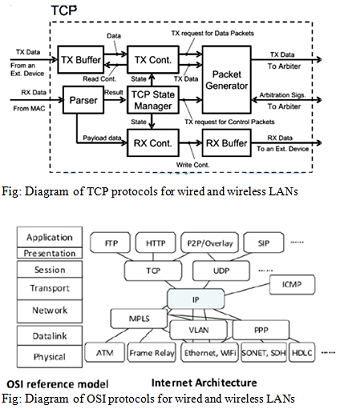
10. Explain why the square and circle shapes cells for cellular communications are not appropriate as compared to hexagonal shape cells.
Since, the square and circle shapes cells for cellular communications cover an entire area without overlapping i.e. they can cover the entire geographical region without any gaps thus these are not appropriate as compared to hexagonal shape cells.
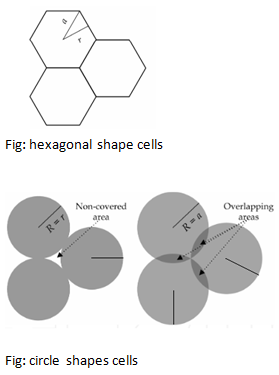
GETTING STUCK WITH SIMILAR CYCLIC REDUNDANCY CHECK ASSIGNMENT? ENROL WITH EXPERTSMINDS'S CYCLIC REDUNDANCY CHECK ASSIGNMENT HELP SERVICES AND GET DISTRESSED WITH YOUR ASSIGNMENT WORRIES!